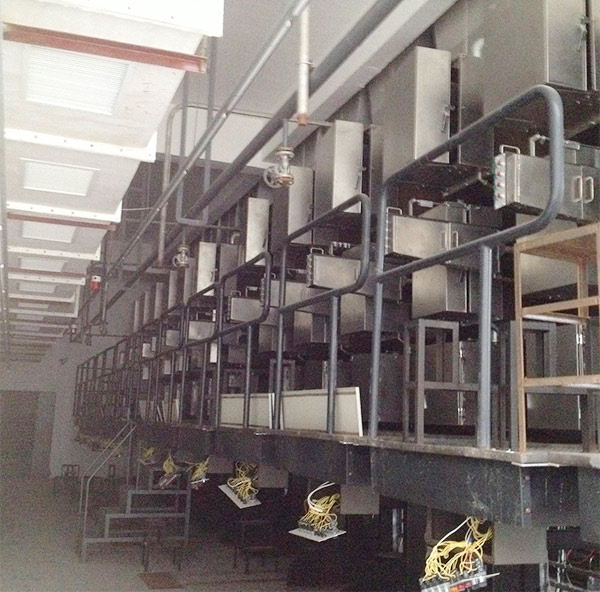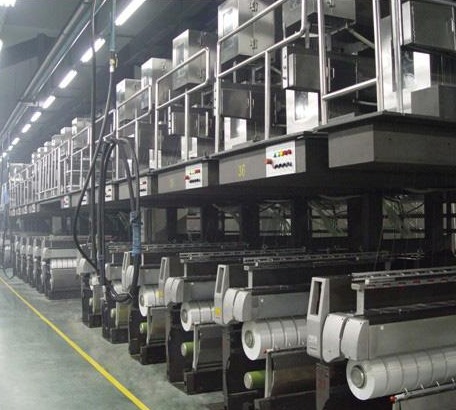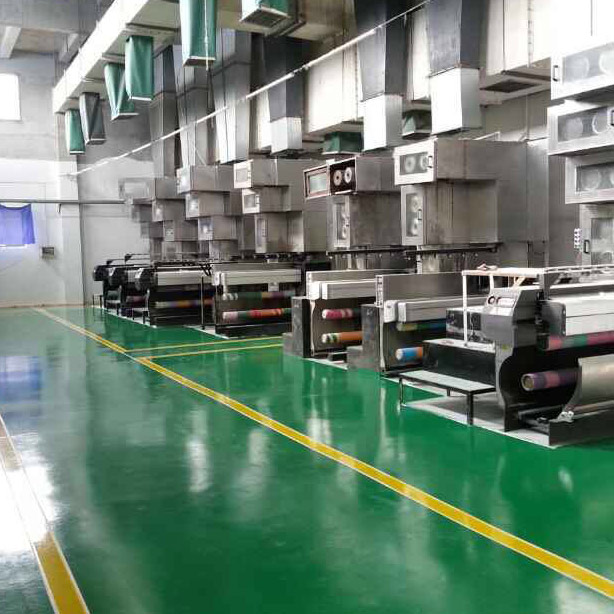- Polypropylene spinning machine
- Polypropylene FDY equipment
- Polyester POY spinning machine
- Polyamide FDY common and high strength equipment
- Polyester FDY equipment
- Polyester high strength equipment
- polyester、Polyamide、 Polypropylene BCF equipment
- Small spinning machine
- All kinds of spinning special parts
- Fubon 2024 wonderful review | Dragon Teng four seas family music, snake dance Kyushu everywhere new, I wish you all the best, accompanied by good luck!
- Textile industry alarm sound | EU sanctions escalation, trade winter is coming, how to break through the textile industry?
- China Shaoxing Textile industry new quality productivity development Forum was held
- Polypropylene spinning machine is the pioneer of excellence in the field of chemical fiber manufacturing
- Management methods | As new managers face many challenges with their changing roles, managers must learn strategies not to detente

- Contact:Mr. Huang Guofu
- Cel:0086-13901505556
- Fax:0086-519-83341119
- Email:czfb5556@126.com
- Add:No. 288-8 ChangLi Rd, Huangli Town, Changzhou, JS PRV.
In the face of major changes in the internal and external development environment, the central government proposed to "gradually form a new development pattern with the domestic cycle as the main body and the domestic and international dual cycles promoting each other." This is a strategy for strengthening the country proposed at the critical stage of China's economic development towards high-quality development. It is necessary to accelerate the formation of a virtuous circle of internal and external development with a higher level of opening up. The textile industry has also ushered in new opportunities for transformation and development with domestic demand as the guidance and supply-side structural reform as the main line.
The textile industry is one of the earliest and most market-oriented industries in my country. As we all know, the Chinese textile industry has actively participated in the development of globalization in the past few decades, used its comparative advantages to meet the needs of both domestic and foreign markets, gradually cultivated its own brands and technologies, and continuously improved the added value of products. After years of development, the textile industry has taken the lead in the world. Position, become the industry with the largest production scale, the most complete industrial chain, and the most complete categories, basically achieving the goal of a textile powerhouse. Following the market orientation, textile companies continue to explore both domestic and international markets, and under the market leadership, actively promote transformation and upgrading, adjust the industrial structure, and the proportion of domestic sales continues to increase. Expanding the domestic market and stabilizing the export share is the direction of the development of textile industry enterprises.
Under the current situation, stabilizing the export share is of positive significance to the "six stability" work proposed by the Party Central Committee and the State Council. This year, under the influence of the new crown epidemic, international demand has been hit hard, but in the post-epidemic era, the degree of recovery of international demand and the adjustment of China's role in the global textile supply chain have become a key impact on the stable exports of my country's textile industry.
International clothing demand "basic plate" is still
How to look at the "basic disk" of international demand for textile and apparel? Taking clothing as an example is a better entry point. Although clothing is a non-fast-moving consumer product and has the attribute of postponing consumption of non-essential goods, as a rigid demand product for final consumption by the masses, as long as the population continues to grow and people's yearning for a better life exists, the "basic disk" of international demand will not There are fundamental changes.
According to the global import clothing data released by the WTO, in 2000, global clothing imports were US$203.099 billion, which increased to US$527.130 billion in 2018, an average annual increase of 5.44%. The scale of global clothing consumption continues to expand. The United States, the European Union, and Japan accounted for 83.7% of global apparel imports in 2000, and this proportion fell to 64.7% in 2018. Although the proportion has declined, the United States, Europe, and Japan are still the main markets for global clothing consumption.
Let's analyze the changes in clothing consumption from the clothing imports of Japan, the United States, and the European Union in the past 20 years.
From 2000 to 2019, the average annual growth rate of Japan's global imports of clothing reached 2.21%, and the "big market" of clothing consumption also rose from 2.12 trillion yen in 2000 to the highest point of 3.42 trillion yen in 2015, and to 2019 It remained at a scale level of more than 3.20 trillion yen. Although the growth rate has been high or low, and even showed negative growth for several years, from a linear trend, the "basic disk" of Japanese clothing import consumption has been expanding continuously in the past 20 years.
From the perspective of U.S. clothing imports, from 2000 to 2019, the U.S.’s global imports of clothing increased by an average annual rate of 2.03%, and the “market” of clothing consumption rose from USD 57.232 billion in 2000 to USD 85.151 billion in 2015. Maintain the import scale of 83.823 billion U.S. dollars in 2019. From a linear trend, the "basic market" of US imported clothing is also slowly increasing.
From the perspective of EU clothing imports, from 2002 to 2019, the EU’s global imports of clothing increased by an average annual rate of 5.00%. The clothing consumption "big market" rose from 37.038 billion euros in 2000 to 84.927 billion euros in 2019. From the linear trend, the “basic” slope of EU imports of clothing exceeds that of the United States and Japan.
It can be seen that although the annual growth of clothing imports in the three major markets has been high and low over the past 20 years, sometimes there has been a negative growth, and even affected by the global financial crisis, the decline in clothing imports in 2009 was still deep. At this stage, affected by the epidemic, the clothing import demand of the United States, the European Union, and Japan has also shown a shrinking trend. But from the long-term trend, the "basic disk" of clothing demand in the three major markets still exists.
my country's garment exports are under increasing pressure
my country is the largest country in textile production and export. Although in recent years, due to the increase in the cost of labor and other factors, some of my country’s textile production capacity has shifted to Southeast Asia and other regions, but limited by the production volume, supporting capacity and rising labor factor costs in Southeast Asia, we want to shake up the development of my country’s textile industry. Global status is difficult to achieve in the short term.
However, in recent years, the share of my country's clothing exports in the main international consumer markets has shown a declining trend.
From the perspective of Japan’s clothing imports in the past 10 years, my country’s clothing accounted for 82.2% of the Japanese import market in 2010. By 2019, this percentage had fallen to 55.9%, a drop of 26.3 percentage points. This part of the market share is mainly shared by Southeast and South Asian countries such as Vietnam, Bangladesh, Cambodia, and Indonesia. From January to August this year, my country's apparel market share in Japan further dropped to 53.4%, indicating that my country's apparel exports to Japan have increased.
The U.S. market is constantly pursuing high-quality and low-cost apparel products, and the market is highly diversified. In 2010, my country's apparel accounted for 39.2% of the U.S. import market. By 2019, this proportion dropped to 29.7%, a decrease of 9.5%. From January to August this year, my country's apparel import market share in Japan further dropped to 22.7%, indicating that my country's apparel exports to the United States are facing greater pressure.
From the perspective of clothing imports in the 27 EU countries in the past ten years, in 2010, my country’s clothing accounted for 43.8% of the EU’s import market. By 2019, this proportion had dropped to 29.5%, a drop of 14.3 percentage points. From January to June this year, the share of my country’s clothing in the EU’s import market rose slightly, reaching 30.4%, an increase of 0.9%, but this is the first half of this year. As the epidemic continues in Europe, pressure on my country’s clothing exports to the EU market is still unacceptable Underestimate.
Improve the status of international circulation with higher quality
Affected by the global epidemic, the world economy is in recession, the circulation of the industrial chain and the supply chain is blocked, and the export of my country's textile industry is also facing challenges. On the supply side, the "low cost" advantage of my country's textile industry is gradually weakening. How to increase the added value in the international cycle is an important issue that needs to be resolved. In terms of demand, the main export markets of my country’s textile products are Europe and the United States. However, due to the sharp decline in international trade demand, economic globalization has encountered a countercurrent, protectionism and unilateralism have increased, and uncertainty and instability have significantly increased. The demand for our textile products may shift and shrink. How to stabilize and expand the market is another important challenge facing my country's textile industry.
Faced with the new situation and new challenges, the industry needs to actively explore a transformation and upgrade path to enhance the ability to meet domestic demand as the main line while enhancing the status of the international cycle.
From product design, raw material supply to processing, production and consumption circulation, China’s textile industry is highly international in every link of the industrial chain, and is an important component of global value chain cooperation and industrial transfer. This determines that the industry can only achieve the optimal allocation of resources and achieve better development only by integrating into the world trend. In the current complex international political and economic situation, the industry must unswervingly use more in-depth international cooperation to oppose geopolitical de-globalization. Further deepen international cooperation in production capacity, and bring benefits to more countries’ economic development and people’s lives in open development; further strengthen cooperation with international brands, continuously integrate new resources and open up new markets in a mutually beneficial and win-win situation; further strengthen cooperation with international organizations Cooperation, reach understanding and consensus in communication and coordination, and strive for more space for the industry.
- Fubon 2024 wonderful review | Dragon Teng four seas family music, snake dance Kyushu every
- Textile industry alarm sound | EU sanctions escalation, trade winter is coming, how to bre
- China Shaoxing Textile industry new quality productivity development Forum was held
- Polypropylene spinning machine is the pioneer of excellence in the field of chemical fiber
- Management methods | As new managers face many challenges with their changing roles, manag
- We will vigorously build advanced manufacturing clusters to promote high-quality economic
- The heating part of the polypropylene spinning machine is called the hot roll
- Textile news | The textile industry is making efforts in the field of digital science and
- 2024 thousands of customers into Shengze men's fabric special matchmaking meeting was held
- Polypropylene small testing machine covers a small area




